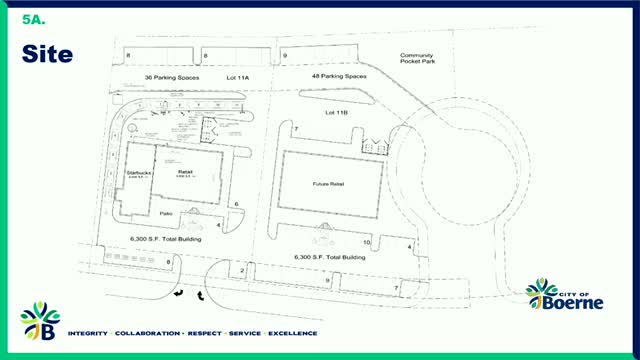City approves Starbucks drive-thru amid parking and traffic concerns
May 05, 2025 | Boerne, Kendall County, Texas
Thanks to Scribe from Workplace AI , all articles about Texas are free for you to enjoy throughout 2025!

This article was created by AI using a video recording of the meeting. It summarizes the key points discussed, but for full details and context, please refer to the video of the full meeting. Link to Full Meeting
Commissioners expressed apprehension regarding the adequacy of parking spaces available for the new retail establishment. One commissioner noted that while there are numerous parking spots, many are occupied by existing businesses, leaving limited space for customers of the new Starbucks. The developer assured the commission that the site plan includes a total of 60 parking spaces, which exceeds the minimum requirement of 21 spaces for the project. This includes designated spots for employees to prevent them from occupying prime customer parking.
A key point of discussion was the uncertainty surrounding Starbucks as the confirmed tenant for the drive-through. The developer clarified that a signed Letter of Intent (LOI) is in place, indicating that Starbucks is committed to the location, although concerns were raised about the potential for other food establishments to utilize the drive-through if Starbucks were to vacate in the future.
Traffic flow was another critical topic, particularly regarding the proposed curb cut onto HEERF Road. Some commissioners voiced concerns that this access point could negatively impact traffic safety and quality of life in the area. The developer explained that the curb cut was part of a previously approved master plan and not a new request. They emphasized that traffic patterns would not significantly change from current conditions, as the drive-through would primarily serve customers already traveling through the area.
The meeting concluded with a focus on the importance of ensuring that the development aligns with community needs while addressing traffic and parking concerns. The commission will continue to evaluate the proposal, considering both the potential benefits of the Starbucks drive-through and the implications for local traffic and parking dynamics.
Converted from Boerne - Planning and Zoning Commission on 2025-05-05 6:00 PM - May 05, 2025 meeting on May 05, 2025
Link to Full Meeting
Comments
View full meeting
This article is based on a recent meeting—watch the full video and explore the complete transcript for deeper insights into the discussion.
View full meeting